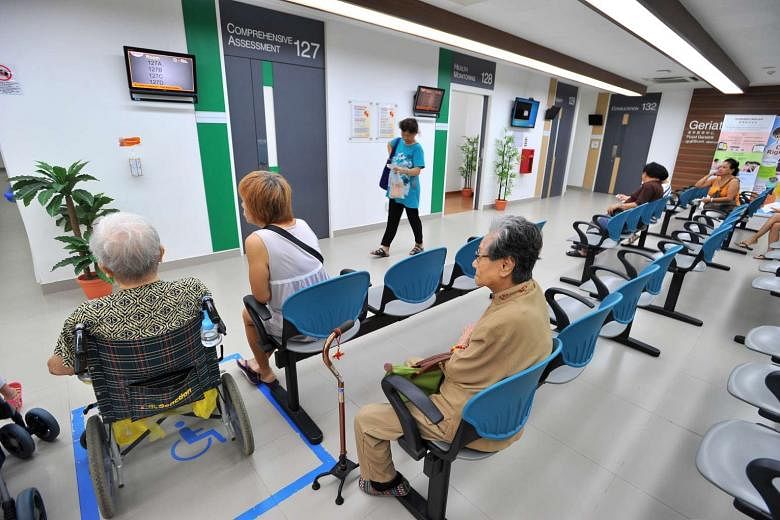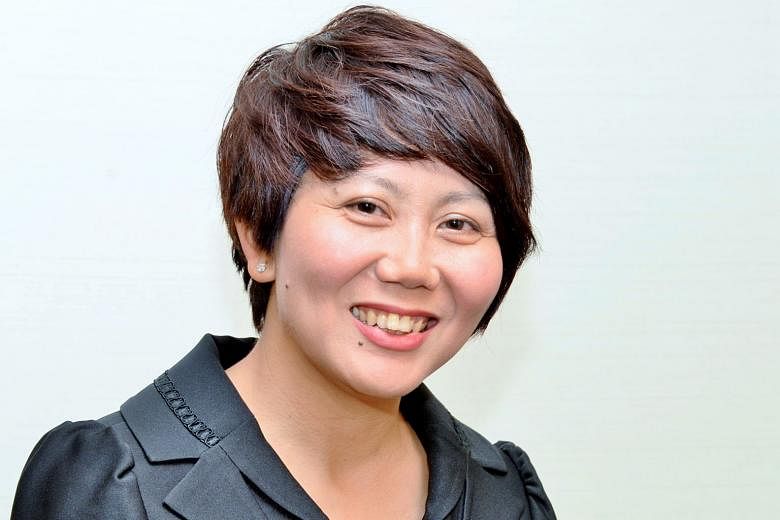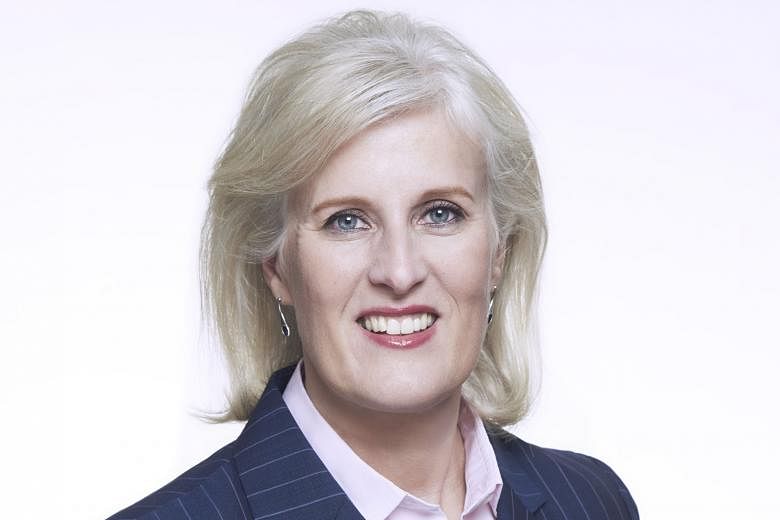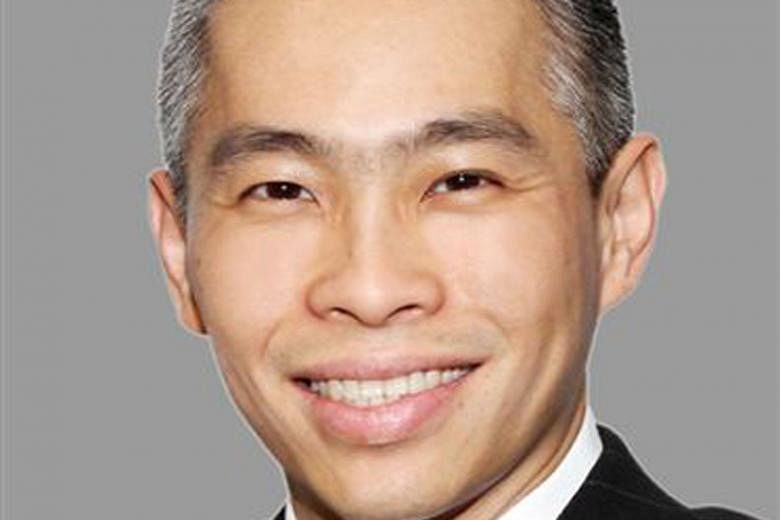The entry of AXA Life Insurance Singapore into the private Integrated Shield Plan (IP) market has widened the scope for consumers - and made it that little bit harder to make your choice.
AXA will offer three IPs from next month, bringing the total to 22, a daunting number when you start looking for a plan that suits you best. About two in three of 3.9 million Singaporeans and permanent residents here have IPs.
IPs are private hospitalisation and surgical plans comprising a basic MediShield component (known as MediShield Life since Nov 1) and an additional private insurance component. They are managed by six private insurers - AIA (HealthShield Gold Max), Aviva (MyShield), AXA (AXA Shield), Great Eastern (Supreme Health), NTUC Income (IncomeShield) and Prudential (PRUshield).
Generally, IPs provide higher protection, covering the B1/A wards of public hospitals and private hospitals. All six insurers will also offer a standard, no-frills IP pegged at public hospital B1 class from May 1.
Having more players raises competition and innovation but also increases the number of choices facing consumers. It can be a mind boggling exercise for an individual to sift through the different features of the Shield plans in the market.
The Sunday Times highlights some differentiating features of the IPs on offer.
AIA SINGAPORE
Females insured with AIA HealthShield Gold Max plans will have their biological babies covered (under the mother's policy) for congenital abnormalities from birth up to two years old, for up to $5,000 per child. The congenital abnormalities benefit is capped at $20,000 per policy.
Another key difference is that AIA offers extra coverage for 30 critical illnesses.
If the policyholder is diagnosed with any one of the 30 critical illnesses, he can enjoy an additional 100 days on top of the existing 100 days for the post-hospitalisation benefit.
Opt for as-charged feature, says expert
There is also an additional claim limit of up to $100,000 per policy year in the event the insured person is diagnosed with a critical illness.
Furthermore, AIA policyholders can sign up to become AIA Vitality members. The wellness programme aims to keep members motivated to stay healthier with rewards such as cashback, discounts on gym membership, travel benefits and preferred rates for health screenings, says AIA chief marketing officer Ho Lee Yen.
AIA HealthShield Gold Max policyholders with the AIA Essential rider will also enjoy premium discounts when they become AIA Vitality members.
AVIVA SINGAPORE
Aviva is the only insurer offering moratorium underwriting, where no health declaration is required. It means that certain pre-existing conditions will be covered after an absence of symptoms, treatments or medication for five years from the time the policy is in force. As there is no underwriting done before inception of cover - which makes the process simpler - applicants obtain coverage sooner.
Mr Daniel Lum, Aviva's director of product and marketing, says conditions apply and not all pre-existing ailments are eligible, but this can be useful for those with less serious pre-existing conditions who want to obtain coverage. Some of the pre-existing conditions that are excluded are heart attack, heart bypass, hypertension, stroke, paralysis, osteoporosis, Aids, any form of cancer except skin cancer, autism, multiple sclerosis, dementia and Alzheimer's.
Other key points of difference of Aviva's MyShield plans include:
•Free child cover for up to 20 years old (age at next birthday) if both parents are covered under the two higher plan options, MyShield Plan 1 or 2.
•Cap on co-insurance to limit the out-of-pocket costs that policyholders have to bear, even if they do not have riders to cover the co-insurance component of their medical bills.
•Additional benefit for major illnesses such as heart attack, major cancer and stroke.
AXA LIFE INSURANCE SINGAPORE
The new kid on the block offers the longest post-hospitalisation cover among the IP insurers at 365 days.
This ensures customers are fully protected for a year upon hospital discharge because recovery from major illnesses such as cancer and stroke may take a long time, says AXA chief marketing officer Kwek-Perroy Li Choo.
Another unique feature is that its Shield Plan A - which covers hospitalisation in private hospitals - has the highest annual limit at $1 million. Its Plan B offers an annual limit of $550,000.
The insurer also offers a letter of guarantee (LOG) service in its plans A and B with the highest limit of $100,000 for private hospitals if customers are approved and referred through AXA's panel of medical specialists, and the highest limit of $15,000 for public hospitals. The LOG helps to waive the upfront deposit required by hospitals.
AXA offers a choice of three additional optional benefits/riders. The Basic Care rider covers the deductible and co-insurance components while the General Care rider includes a daily hospital cash incentive of up to $250 per day and covers ambulance or taxi charges to and from hospital as well as traditional Chinese medicine treatment after discharge. Its Home Care rider includes home nursing services and doctor home visits, post-hospitalisation, as well as costs of stay in an inpatient hospice care institution, subject to limits and conditions.
GREAT EASTERN LIFE (GE)
GE provides cover for 11 pregnancy and childbirth complications, the highest number in the industry. It is also the only insurer to cover pre-hospitalisation specialist's consultation for psychiatric treatment.
To complement its Supreme Health Shield plans, GE offers Total Health - a standalone plan - which provides the highest number of special benefits in the market - nine in total, including two interesting benefits.
One is reimbursement of charges incurred for medical treatment during confinement in an inpatient hospice care institution after hospital discharge, for up to 90 days per policy year. This includes round-the-clock support for terminally ill patients.
The other is the Home Health Care Benefit, which provides up to $100 per day and up to $5,000 per policy year for reimbursement of treatments and medical services provided at home within 30 days after discharge from hospital.
It covers professional fees, including visits made by doctors, qualified nurses and qualified physiotherapists. For example, long-term ailments such as dementia and injuries like fractures may require follow-up home treatment after discharge. This benefit allows the patient to recover at home.
GE chief product officer Lee Swee Kiang noted Ministry of Health data shows a 26 per cent rise from 2006 to 2014 for home care and palliative home care visits.
"To address the health insurance needs of a rapidly ageing population in Singapore, we included these two benefits so that our customers have a choice to receive care in the comfort of their home or in a hospice," he says.
PRUDENTIAL SINGAPORE
To offset inflation in medical costs, Prudential offers a unique "adjustment" feature for the limits customers can claim in a policy year. This is also known as policy year limits.
Ms Angela Hunter, its executive vice-president and chief marketing officer, says: "Medical costs are on the rise due largely to medical inflation and the advancement in medical treatment and technology.
"Given this, it is important that the policy year limit of health policies is pegged to the Consumer Price Index (CPI) to ensure that the level of coverage keeps pace with inflation and the policyholder continues to be sufficiently protected in the long term."
As such, the limits have edged up in recent years and are now at $632,700 for PRUshield A Premier and $379,700 for PRUshield A Plus.
Prudential also offers pre- and post-hospitalisation coverage of up to 180 days before or after hospital confinement or day surgery. This includes expenses incurred for general practitioner consultation resulting in a referral to a specialist as well as follow-up treatment and services like dressings and physiotherapy following hospital discharge.
NTUC INCOME
The Enhanced IncomeShield Preferred plan, which covers stays in private hospitals, is the only IP that provides a prosthesis benefit of up to $10,000 per policy year. This pays for the prosthesis the insured person needs if he has lost a limb or eye resulting from the injury or illness that led to hospitalisation.
Another differentiating feature is Income provides as-charged cover for people who intend to stay in B2 and C wards of public hospitals. Its Enhanced IncomeShield C plan caters to those with household income of less than $3,500 or who live in three-room or smaller HDB flats.
Mr Peter Tay, Income's chief operations officer, says: "This provides an option for lower-income people to own an as-charged plan at affordable premiums. Combined with a Plus rider (which covers the deductible and co-insurance components), the Enhanced IncomeShield C plan provides coverage from the first dollar, giving the insured greater peace of mind."
It is also the only IP provider to offer its insurance contracts in plain English to help policyholders better understand their policies and make informed decisions. The documents satisfy the "Crystal Mark" standard for offering simple, clear and concise information.
EXPERTS SAY
Mr Patrick Lim, associate director at financial advisory PromiseLand Independent, highlights the importance of a reasonably high annual policy limit.
"I would recommend that customers go for a higher annual policy limit, the higher the better, so as to cover big hospitalisation bills for extreme cases," he says.
AXA offers the highest policy annual limit at $1 million followed by Income's $700,000, for the two insurers' highest class IPs.
Mr Brandon Lam, DBS Bank's head of consumer insurance products, likes the as-charge feature. This is present in most IPs, except the new standard IP. An as-charged plan does away with caps on claims such as daily ward charges, surgical costs and so on.
"Pick an as-charge plan where possible so that you get reimbursed as charged and do not need to fork out additional amounts," he says.
Mr Fabian Ng, UOB's head of retail bancassurace, group retail, advises that to get the best value, you should look out for the deductible and co-insurance conditions in the hospitalisation policies.
"Individuals who are less likely to be hospitalised can consider plans with higher deductibles and more affordable monthly premiums. Conversely, those with chronic health problems can pay higher monthly premiums to reduce the payable deductible amounts," he notes.
Other considerations include affordability as premiums of such plans are expected to rise significantly with age. You should also gauge the appropriate level of cover you need.
Mr Lim cautioned people to have sufficient savings set aside for a rainy day. He has seen people who have had to scramble to raise cash when hospitals request payment on an interim basis. Insurers would typically only reimburse claims after the patient's discharge.











